
Click here for information about the full INFORMS conference, including registration, hotel and venue information. A printable announcement can be downloaded (requires Adobe Acrobat Reader 4.0)
 |
The Fall 2000 INFORMS National Meeting was held in San Antonio, TX,
November 5-6, 2000. For more information, contact Pooja Dewan, Burlington
Northern Santa Fe, the cluster chair, at 817-352-2257, or by e-mail
at Pooja.Dewan@bnsf.com .
Click here for information about the full INFORMS conference, including registration, hotel and venue information. A printable announcement can be downloaded (requires Adobe Acrobat Reader 4.0) |
Panel A-- Network and Strategic Planning ApplicationsIngrid Schultze, Reebie Associates, Moderator
|
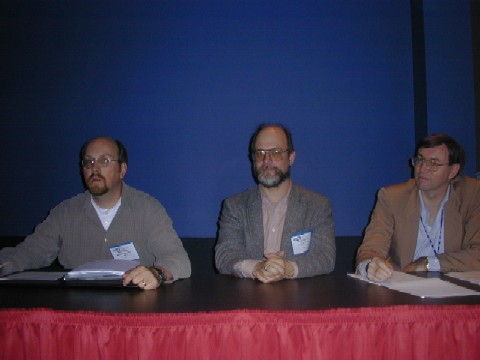 |
(a)
Consultant Perspective – Howard Rosen,
ALK Associates. Successes and failures of corridor planning models
from a systems and consulting perspective.
(b)
Systems Perspective - Roger Baugher, Norfolk Southern. Contributions
of OR to corridor planning efforts—where OR has worked, where it needs
work.
(c)
Paul Julich, GE Harris, Meet-pass planning of real-time applications.
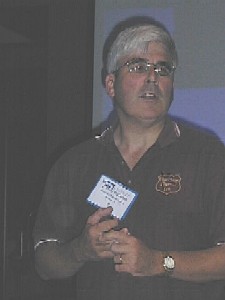 |
Panel C-- Terminal Capacity and PlanningCarl Martland, MIT, Moderator – Overview of how we measure.(a) J. Reilly McCarren, Wisconsin Central System, Railroad requirements
perspective
|
(a)
Consultant Perspective - Joe Bryan,
Managing Principal, Reebie Associates.
(b)
Carrier Perspective - David Helmer.
(c)
International Railroad Perspective – Martha
Lawrence, Principal, T&MC.
Business Meeting - Sunday, November 5, 4:45 - 5:45 pmConvention Center, Room 007ARoger Baugher was awared the first annual RASIG Award for contributions to OR in the Railroad Industry. The RASIG By-Laws were be reviewed to better utilize officers. The next RASIG meeting will be held in conjunction with the INFORMS meeting in Miami in November 2001. |
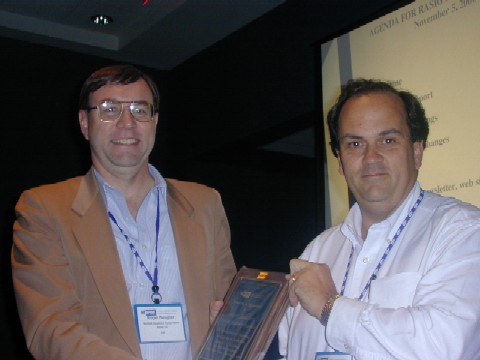 |
|
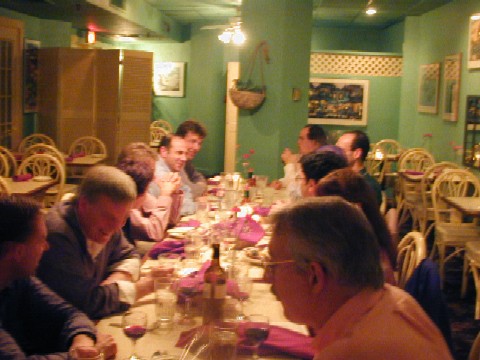 |
||
Dutch Treat Dinner - Sunday, November 5, 6:30 pmRASIG members and friends braved the rain to gather at Bayous for drinks and dinner. |
||
Currently railroad crews do not get any scheduled time off. They
can be called to work at any time as long as they are rested and on the
active board. We present a model that can be used to analyze the
operating effects of providing crews with structured time off.
We demonstrate estimation of coal traffic flows from high quality mine
and customer data and low quality OD flow data using matrix balancing and
network flow algorithms. We demonstrate a network flow model to estimate
“bid prices” in a passenger rail revenue management, and compare it to
more complex models.
Shan’s Block Assignment Model (SBA) solves the block-to-train assignment
problem for railroad operations. It is the first model that takes
train capacity into account when assigning blocks to trains. CSX
Transportation utilized this model as a key tool in developing blocking
plan for its combined network.
This paper describes the application of the Inverse Optimization Technique
to optimally adjust link cost factors to closely match the historical multicommodity
traffic flow. When using various tools to simulate railway traffic flow,
network link cost factors (impedance’s) are introduced to reflect preferred
routes, often times different from shortest paths.
The current car distribution process is described, followed by a discussion of how optimization can be beneficial. Improving the accuracy of car supply and demand forecasts is seen as the foundation for successful optimization and efforts in this area are discussed.
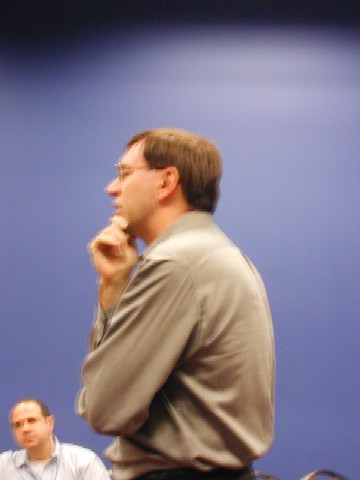 |
NS Empty Equipment DistributionAbstract: A description of the current empty railcar distribution system at NS followed by a discussion of where Operations Research efforts are being targeted to improve the process.Roger Baugher, Norfolk Southern Railroad, 404-897-3029 |
Overview of the new Equipment Distribution Optimization (EDO) system
recently implemented at BNSF. Discussion will include an overview
of the system, a description of the user training process, preliminary
results, and possible enhancements.
Overview of industry's first real-time, continuous optimization process
for managing the distribution of empty freight cars. In addition
to a system overview, the presentation will describe the interface with
order processing, the benefits realized by the system, and how the system
was used to manage the integration of Conrail.
Railroads face many optimization problems, e.g., service design, car and train routing, equipment distribution and crew assignment. We emphasize not only the need for modeling (and solving) realistic versions of these problems, but also the need for integrating the solutions for individual problems into the railroad system as a whole.
We propose an adaptive dynamic programming algorithm for the real-time management of locomotives for rail freight transportation. The model uses the principle of information decomposition to create diagnosable subproblems. Value function approximations are used to coordinate actions between subproblems. Numerical results for a large railroad will be presented.
Rail boxcar (merchandise) operations differentiate themselves from intermodal (container) operations in part by an increased complexity of the routing patterns for the traffic. We present a solution methodology for the (centralized) routing of boxcars and show why a simpler (decentralized) solution procedure would not be appropriate in this setting.
Updated 15 November 2000